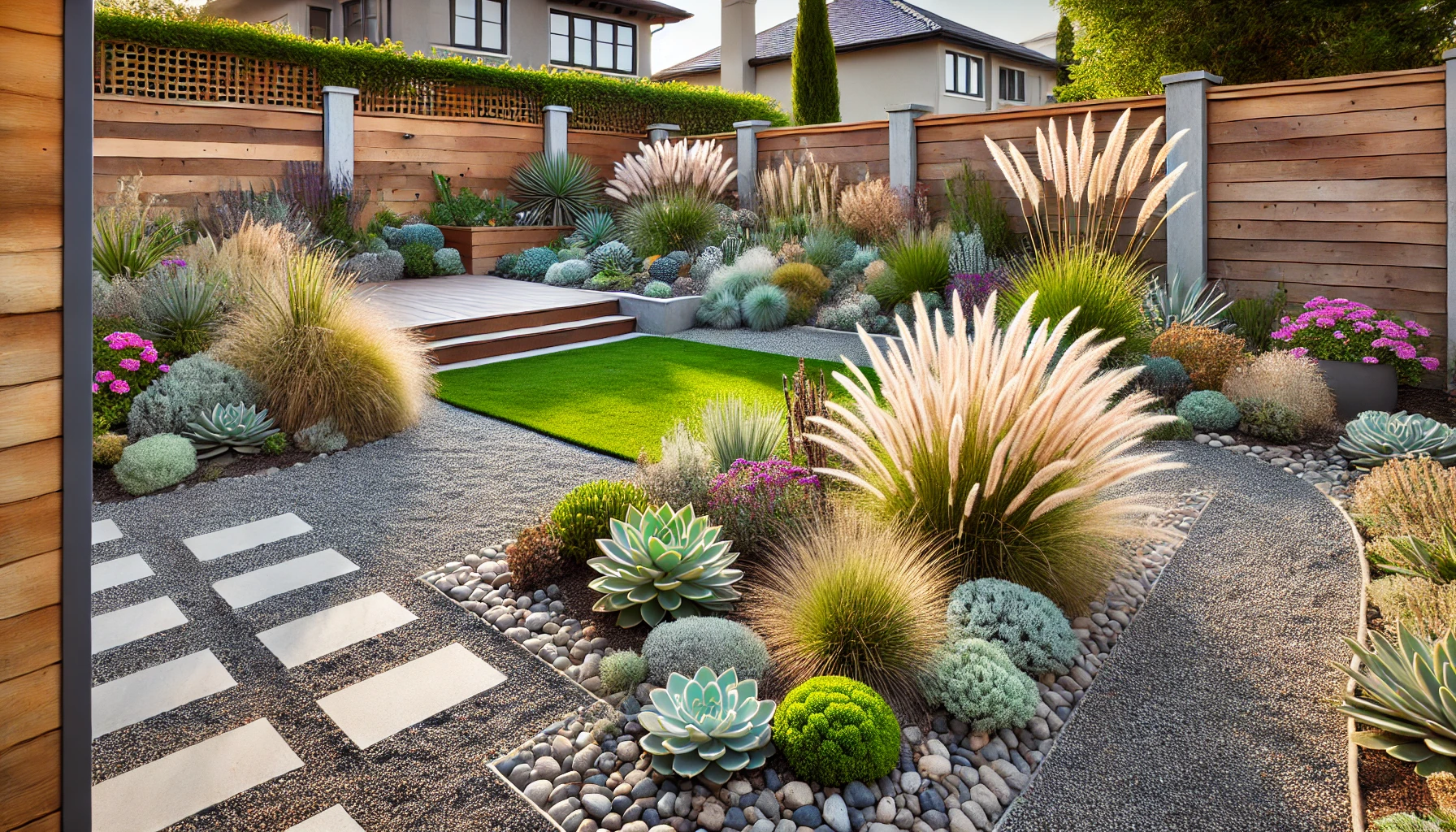A low-maintenance garden is the perfect solution for those who want to enjoy the beauty of nature without spending hours on upkeep. By selecting the right plants, using efficient gardening techniques, and planning for minimal care, you can create a stunning garden that practically takes care of itself. In this article, we’ll show you how to design a garden that is easy to maintain, saving you time and effort.
Step 1: Choose the Right Plants
The foundation of a low-maintenance garden is selecting plants that require minimal care.
- Native Plants: Native plants are well-suited to your climate and soil, making them more resistant to pests and diseases. They also require less water and fertilizer.
- Perennials: Perennials come back year after year, eliminating the need to replant every season. Choose hardy varieties like lavender, coneflowers, and hostas.
- Drought-Tolerant Plants: Opt for drought-tolerant plants such as succulents, sedums, and ornamental grasses. These plants need less water, especially once they’re established.
- Avoid High-Maintenance Plants: Stay away from plants that require frequent pruning, deadheading, or special care, such as roses or certain annuals.
Step 2: Plan Your Garden Layout
A well-planned garden layout makes it easier to maintain your garden.
- Group Plants by Watering Needs: Group plants with similar water needs together to avoid overwatering or underwatering.
- Use Mulch: Apply a layer of mulch around your plants to help retain moisture, suppress weeds, and regulate soil temperature.
- Consider Plant Size: Make sure plants are spaced properly so they don’t overcrowd each other. This allows for better air circulation and reduces the need for trimming and pruning.
- Use Ground Covers: Ground covers like creeping thyme or clover can reduce the need for weeding and lawn mowing while adding beauty to your garden.
Step 3: Reduce Lawn Area
Lawns require regular mowing, watering, and fertilizing, making them high-maintenance. Consider replacing some or all of your lawn with more sustainable options.
- Replace Lawn with Flower Beds or Gravel: Replace areas of lawn with flower beds, shrubs, or low-maintenance ground covers. Gravel or mulch paths are also great alternatives.
- Create a Wildflower Meadow: If you have a larger space, a wildflower meadow is an excellent low-maintenance option. Once established, it requires little watering or upkeep.
Step 4: Use Low-Maintenance Materials
The materials you choose for your garden can make a big difference in the amount of maintenance required.
- Choose Durable Materials: Use durable, weather-resistant materials for garden structures like fences, paths, and benches. Materials such as stone, brick, or composite decking require little to no maintenance over time.
- Opt for Artificial Turf: If you want a lawn-like appearance without the upkeep, artificial turf is a low-maintenance alternative that doesn’t require mowing or watering.
Step 5: Automate Watering
Watering is one of the most time-consuming aspects of garden maintenance, but you can automate the process to save time.
- Drip Irrigation: Install a drip irrigation system to deliver water directly to the roots of your plants. This minimizes water waste and ensures your plants receive consistent moisture.
- Soaker Hoses: Soaker hoses can be laid along the base of your plants to provide even watering throughout your garden.
- Rain Barrels: Collect rainwater in barrels to irrigate your garden. This reduces your reliance on municipal water and helps conserve resources.
Step 6: Keep Weeding to a Minimum
Weeding can take up a lot of time, but there are ways to reduce the amount of weeding you need to do.
- Mulch Your Beds: Mulch helps prevent weeds from germinating by blocking sunlight and providing a barrier between the soil and weed seeds.
- Use Weed Barriers: Landscape fabric or cardboard placed beneath mulch can also help suppress weed growth.
- Hand Weeding: While no garden is completely free of weeds, regular hand weeding and using tools like a hoe can keep them under control.
Step 7: Choose Low-Maintenance Garden Furniture and Decorations
Add elements to your garden that are easy to maintain.
- Choose Durable Furniture: Select weather-resistant outdoor furniture made from materials like metal, resin, or teak, which require minimal upkeep.
- Add Decorative Stones or Sculptures: Instead of high-maintenance water features or fountains, consider adding decorative stones, sculptures, or simple garden art.
Enjoy a Beautiful, Low-Maintenance Garden
Creating a low-maintenance garden doesn’t mean sacrificing beauty. With the right plant selection, efficient watering systems, and careful planning, you can enjoy a garden that thrives with minimal effort. By choosing plants that require less care and using sustainable gardening practices, you’ll have more time to relax and enjoy your outdoor space.
